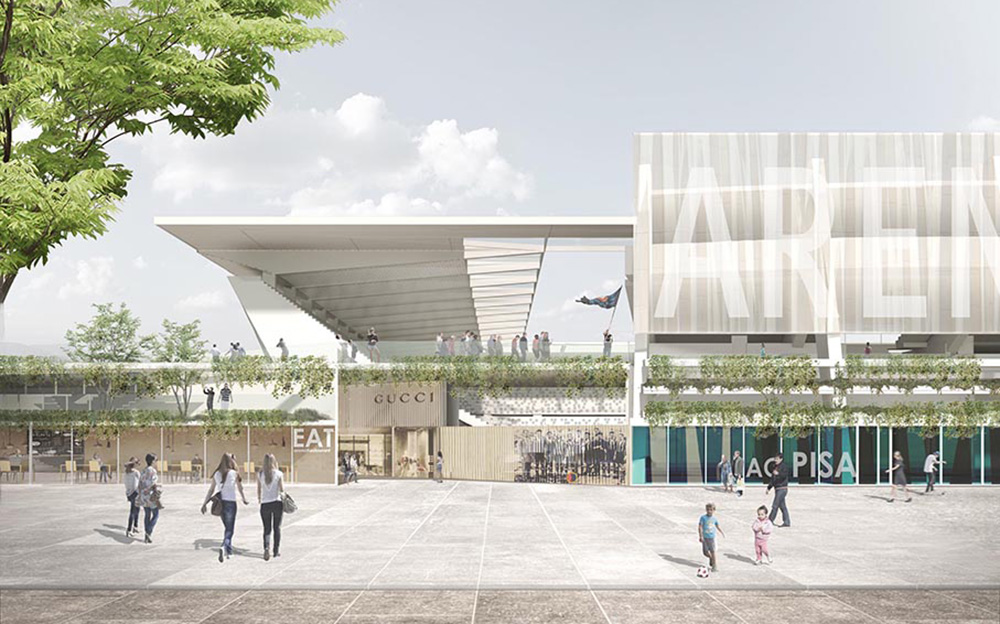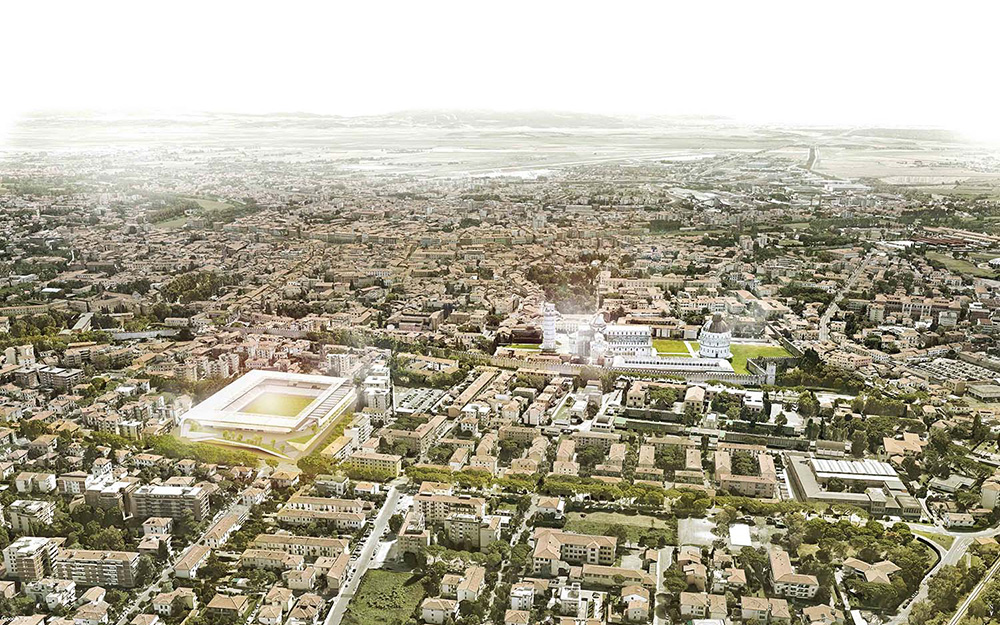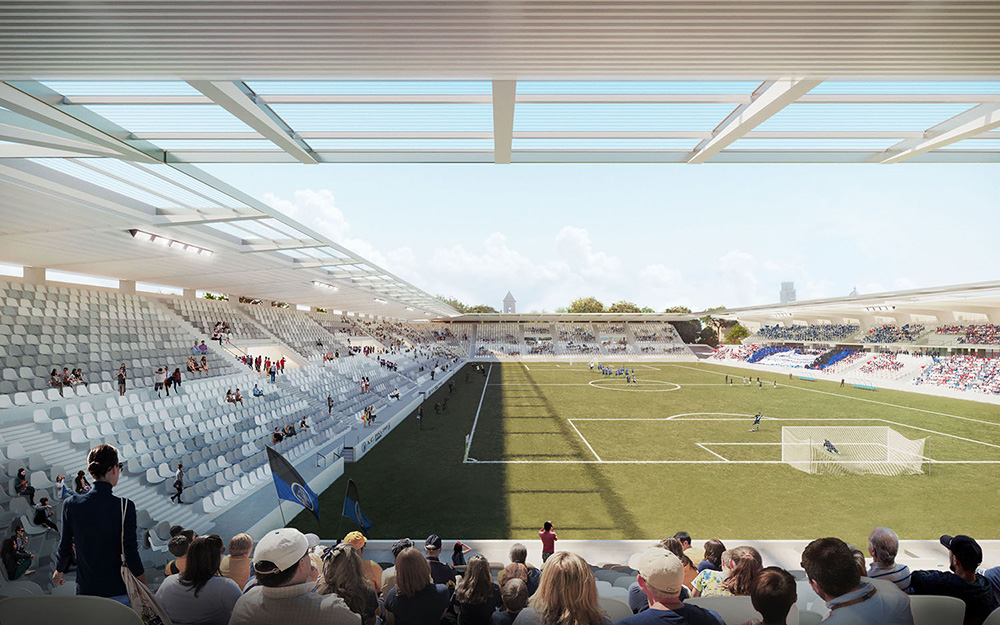A new square for the city. This is the definition chosen by the architects of Iotti+Pavarani Architetti studio for the upgrading and enhancement of the Stadium “Arena Garibaldi – Stadio Romeo Anconetani” in Pisa.
The new Pisa stadium will be built over the area taken up by the existing construction in a setting which is both sensitive to its historic associations: in fact, the new arena will be two hundred metres from the Piazza dei Miracoli and will have the opportunity of generating a complex which is strongly interconnected with the locality, exploiting its potential to the full while at the same time creating new types of public space.

The architectural intention is thus to define a “new landscape” establishing strong synergies with its context, a cityscape capable of generating a relaxed and welcoming atmosphere characterised by elegance, lightness and luminosity which exert a powerful effect on visitors to the nearby Piazza dei Miracoli.
This is the reason why the new Stadium of Pisa will be a collective and multi-functional space, open to different levels of use – a new contemporary square for the City.
The whole stadium will incorporate a higher level pedestrian space in the form of a ring, a raised green square which will be used to manage the system of flows of people to and from the different sectors of the stadium and the related external security areas: this will lead to a radical improvement in the organisation of external public spaces at street level while at the same time it will offer a second level for the use and enjoyment.

The lower part can then be used to house a variety of different activities (shops and service facilities, a cafe-restaurant, Pisa Football club exhibition area and a public car-park) with the potential to transform the area into a lively space.

On the other hand, the sporting complex has been conceived as a single innovative body which is able to guarantee the functional and safety standards required for a stadium: it will have a capacity of 16,800 seats, all of which will be under cover and separated into 4 sectors; what is currently the main stand will be renovated and maintained with the complete rebuilding of the east, north and south stands.
The height of the stadium has been kept as low as possible in order to minimize the stadium’s impact on the city skyline; the stadium roof itself has been designed to be extremely light.

Finally, the external wall-covering has been conceived as a series of different geometrical patterns in ETFE using shades of colours tending towards white in order to create a generally ethereal and luminous atmosphere and establish a dialogue with the past while also looking towards the future.


